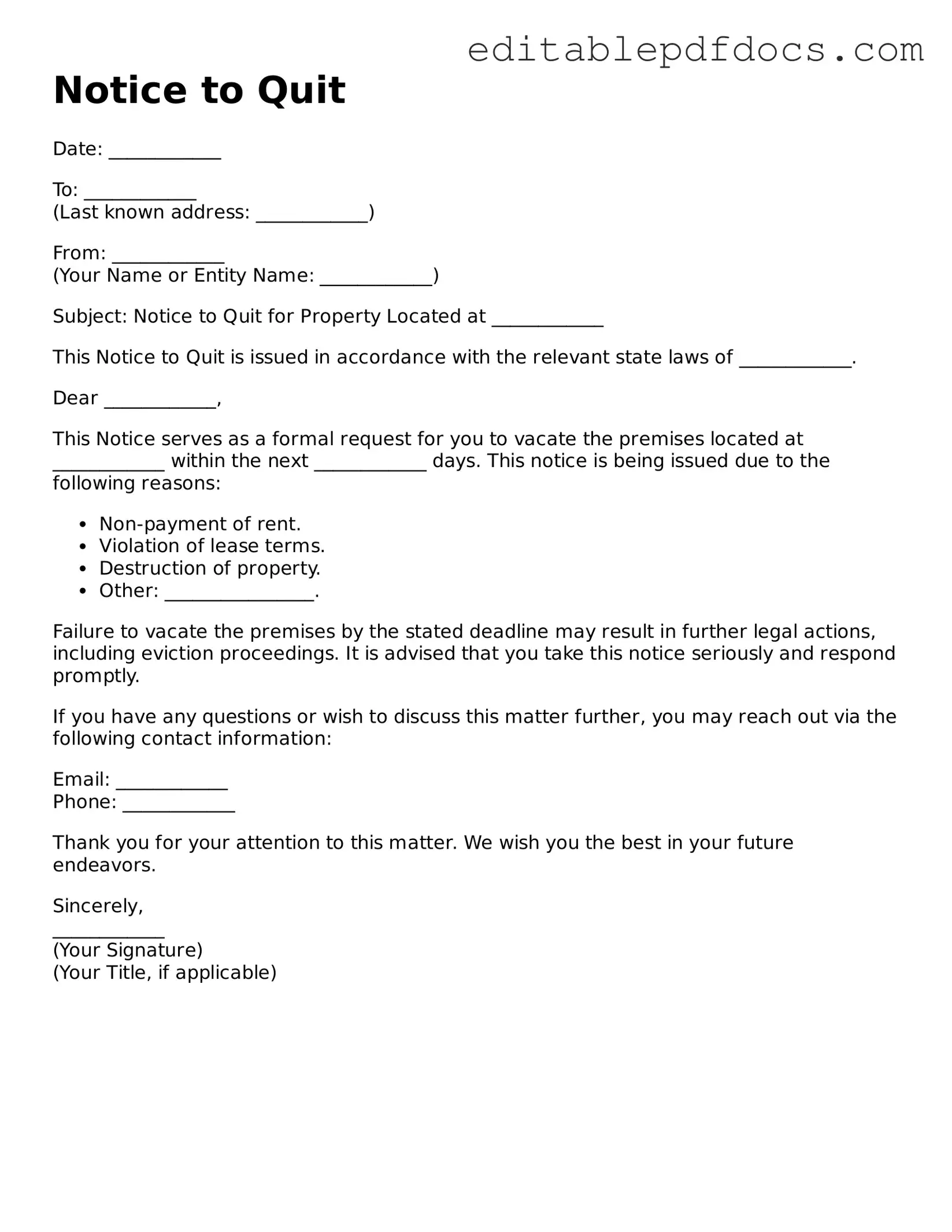When navigating the often complex landscape of landlord-tenant relationships, understanding the Notice to Quit form becomes essential for both parties involved. This document serves as a formal communication tool, signaling a landlord's intention to terminate a lease agreement and request that the tenant vacate the premises. While the specific requirements can vary by state, the Notice to Quit typically outlines critical details such as the reason for eviction, the timeline for vacating the property, and any applicable legal references. It is not merely a piece of paper; it represents a significant step in the eviction process, underscoring the importance of clarity and compliance with local laws. For tenants, receiving a Notice to Quit can be a daunting experience, often prompting questions about their rights and options. For landlords, it is a necessary procedure that must be executed correctly to avoid potential legal complications. Understanding the nuances of this form can empower both landlords and tenants to navigate their responsibilities and rights more effectively, paving the way for a smoother transition, whether it be the continuation of a tenancy or the conclusion of a rental agreement.
